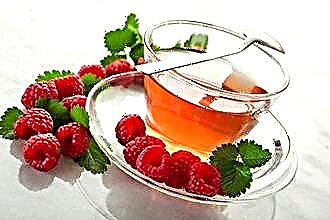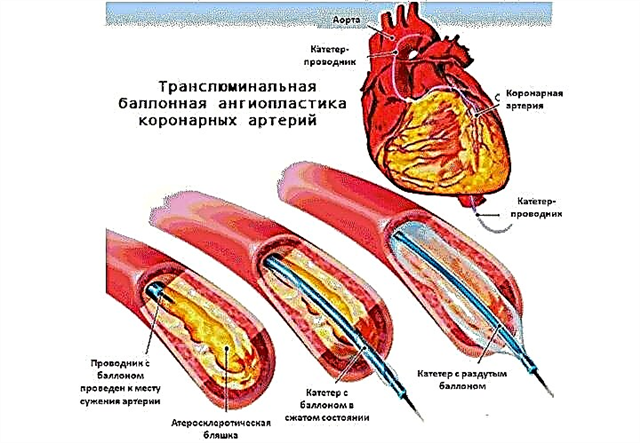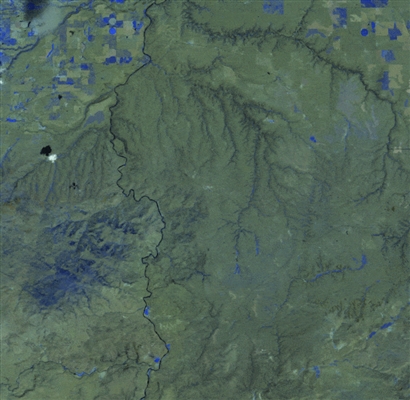 Symptomatically, a viral disease can be suspected on the basis of body aches, subfebrile hyperthermia, runny nose, nasal congestion and sore throat. As for bacterial diseases, from clinical signs it is worth highlighting febrile hyperthermia, severe sore throat and pronounced intoxication syndrome.
Symptomatically, a viral disease can be suspected on the basis of body aches, subfebrile hyperthermia, runny nose, nasal congestion and sore throat. As for bacterial diseases, from clinical signs it is worth highlighting febrile hyperthermia, severe sore throat and pronounced intoxication syndrome.
Among the most common reasons when the throat may turn red, it is worth highlighting:
- SARS, flu;
- measles;
- diphtheria;
- rubella;
- chicken pox;
- tonsillitis;
- teething;
- polluted air, dust.
Predisposing factors include immunodeficiency, chronic infectious diseases, general hypothermia and contact with a sick person.
The most dangerous is angina due to severe symptoms and many severe complications. Distinguish between catarrhal form, purulent (lacunar, follicular), necrotic and ulcerative membranous.
Without timely treatment, complications develop:
- local (otitis media, abscess, phlegmon, laryngeal edema, bleeding);
- general (valve cut, myocarditis, endocarditis, articular damage).
It is also worth highlighting the risk of chronicity of tonsillitis, in which an infectious focus is formed, causing frequent exacerbations of tonsillitis.
General recommendations for treatment
How to treat depends on the cause of the sore throat, however, we highlight the recommendations, the observance of which will help speed up the healing process:
- bed rest makes it possible to avoid complications of the disease, especially if it is a sore throat, to restore strength and strengthen the immune defense.
- an abundant warm drink, due to which toxins are removed from the body, fever is reduced and fluid losses are carried out. To this end
 shown warm milk with honey, tea with raspberries, currants, cranberry juice, rosehip broth and jelly;
shown warm milk with honey, tea with raspberries, currants, cranberry juice, rosehip broth and jelly; - proper nutrition with the exclusion of spicy foods, spices and solid foods in order to avoid additional damage to the mucous membrane. Chicken or vegetable broths are especially useful;
- frequent wet cleaning of the room, airing;
- humidification of the air, since dryness of the mucous membrane leads to its injury;
- lack of contact with people who are ill with infectious diseases, since the addition of a secondary infection will significantly worsen the condition of the child;
- vitamin therapy (vitrum, multitabs, supradin).
The use of herbal decoctions (chamomile flowers, linden) is allowed only after the permission of a doctor and in the absence of allergic reactions.
Antibiotic therapy
It is necessary to treat a red throat with bacterial pathology with antibacterial drugs. For children, antibiotic therapy is prescribed with caution, choosing medicines with a minimum number of side effects. Most often, the doctor prescribes:
| Group of antibacterial drugs | Representatives | Peculiarities | Admission rules | Side effects |
| Semi-synthetic penicillins | Amoxicillin, Flemoxin solutab | Most commonly prescribed for children | Regardless of the meal | Rash, diarrhea |
| Semi-synthetic penicillins | Amoxiclav, Flemoklav, Augmentin | Combined with clavulonic acid | Regardless of food | Rash, diarrhea |
| Cephalosporins | Cephalexin, Zinnat | Prescribed for intolerance or ineffectiveness of penicillins | Regardless of food, except for Zinnat (leading) | Rash, diarrhea |
| Macrolides | Sumamed, Klacid | Hypoallergenic, with a wide acting spectrum, including against intracellular microbes | Sumamed is taken 50 minutes before meals, Klacid - regardless of food |
Treatment of the throat with antibiotics can lead to the development of intestinal dysbiosis, in which the ratio of bacteria in the microflora is disturbed. As a result, there is a change in the nature of the stool, the appearance of discomfort in the abdomen, bloating, moodiness and refusal to eat.
Probiotics should be taken to prevent dysbiosis. For children, BioGaya, Linex, Bifiform and other products are allowed.
Antiviral drugs
 If a sore throat is caused by a viral infection, in most cases, antiviral drugs of the following groups are prescribed:
If a sore throat is caused by a viral infection, in most cases, antiviral drugs of the following groups are prescribed:
- homeopathic composition (Aflubin, Influcid, Viburkol);
- interferon (Viferon, Nazoferon, Anaferon, Laferobion) - available in tablet form, in the form of suppositories or nasal drops. The effect is observed after 2-3 days in the form of relief of the condition or regression of clinical symptoms;
- immunostimulating (IRS-19, Bronchomunal, Imudon, Immunal) are prescribed for immunostimulation in diseases or for prophylactic purposes;
- pharmaceuticals (Arbidol, Acyclovir, Remantadin).
| For children under one year old | Grippferon, Laferobion, Anaferon, Immunoflazid, Aflubin drops, Acyclovir, Oscillococcinum |
| From 2 years | Groprinosin, Anaferon, Influcid, Viburcol, Proteflazid, Imupret |
| From 3 years old | Arbidol, Kagocel |
Antipyretic drugs
When the child's temperature is above 37.5 degrees, it is necessary to begin the fight against hyperthermia. To do this, it is recommended to increase the drinking regime or wipe the skin with a diluted vinegar solution.
For children under three years old, vinegar rubdowns are prohibited due to the high risk of intoxication.
Red throat and fever are often observed with angina. In children, a high temperature can cause vomiting, convulsions and impaired consciousness, therefore, when it rises above 38 degrees, it is necessary to use Paracetamol in the form of suppositories, Nurofen in the form of a syrup.
Gargling
When a red throat is found without a fever in a child, Komarovsky recommends the use of antiseptic solutions for rinsing. Note that children under three years old cannot gargle, so there is a risk of bronchospasm and asphyxiation when the solution enters the respiratory tract.
The rinsing procedure requires adherence to certain  rules:
rules:
- rinsing is carried out with warm water to avoid burns of the mucous membrane and its irritation with cold water;
- after the procedure, you should not drink or eat for half an hour;
- solutions during the day need to be alternated so as not to cause addiction of pathogenic microorganisms to the drug;
- 200 ml of solution is enough for one procedure;
- keep the solution in the throat for as long as possible.
Dr. Komarovsky recommends the use of a soda-salt solution - it is necessary to mix the ingredients in a volume of 5 g, mix thoroughly in warm water 190 ml. If the child does not have an intolerance to iodine-containing drugs, you can add 1 drop of iodine to the solution.
An herbal medicine can be prepared by brewing chamomile, sage, and calendula. The broth is used for rinsing with anti-inflammatory, antiseptic, decongestant and analgesic purposes. It is not recommended to constantly rinse with a decoction of herbs, it is advisable to alternate them with pharmaceuticals. Among the approved drugs, we highlight Givalex, Tantum-Verde, Furacilin, Chlorophyllipt. If it is necessary to use a local antibacterial drug, the appointment of Bioparox is allowed. It comes in the form of a spray for irrigation of the pharyngeal mucosa.
Orasept and Strepsils are also produced in the form of a spray, however, it is necessary to take into account the age at which the medication is allowed.Of the tablets used Lizak, Lisobakt, Strepsils, Faringosept and Septolete.
Inhalation
A red throat in a child can be treated with inhalation. In the absence of a nebulizer at home, you can carry out the procedure using eucalyptus, fir or sea buckthorn oils. It is enough to dissolve 3 drops in a glass of hot water. Inhalation begins only after the solution has cooled down in order to avoid burns of the mucous membrane.
The oil breaks down into large particles that cannot penetrate deeper than the throat, which provides a local moisturizing, soothing and anti-inflammatory effect.
Inhalation with potato is quite common  broth. To do this, boil the potatoes, leave them at the bottom of the pan and wait until they cool slightly. Then you need to tilt your head over a container of steam, cover your head with a towel and inhale the warm steam.
broth. To do this, boil the potatoes, leave them at the bottom of the pan and wait until they cool slightly. Then you need to tilt your head over a container of steam, cover your head with a towel and inhale the warm steam.
It is worth emphasizing that in the acute stage of a bacterial disease, the risk of increased reproduction of pathogenic microorganisms increases, which leads to the progression of the disease.
The most effective and safe device for inhalation is considered to be a nebulizer. Thanks to him, it is possible to carry out the procedure even to babies in inpatient treatment. using a nebulizer in children at home allows you to achieve a good result, subject to certain rules:
- for a nebulizer, the use of oil is prohibited, since it contaminates the apparatus and reduces the lumen of the bronchi with large grinding of the drug;
- the medications used are diluted exclusively with saline;
- 3 ml of the prepared preparation is enough for one procedure;
- inhalation is carried out 90 minutes after a meal, so as not to provoke vomiting;
- after the procedure, it is forbidden to go out into the cold, drink or eat for half an hour;
- After using the device, it is necessary to clean it, as the nebulizer can become a source of infection if not properly maintained.
For therapeutic purposes, inhalation with alkaline mineral water without gas, for example, Borjomi, is prescribed. Such procedures can remove the redness of the throat in children, moisturize the mucous membrane and eliminate pain when swallowing.
From antiseptic solutions, the use of Chlorfillipt or Dekasan is allowed. They lead to the death of bacterial microbes, thereby reducing the severity of inflammation and speeding up recovery.
How to treat purulent sore throat? According to the doctor's prescription and in the absence of contraindications, inhalations with an antibacterial drug are carried out, which makes it possible to exert a local effect on infectious pathogens.
For the procedure, you need a mask (for small children) or a mouthpiece tube, which you need  clasp your lips. Breathing should be calm, so the procedure is carried out half an hour after exercise. This will restore breathing and cardiac activity.
clasp your lips. Breathing should be calm, so the procedure is carried out half an hour after exercise. This will restore breathing and cardiac activity.
Among the advantages of the nebulizer, one should highlight the constant supply of the drug, the temperature control of the steam, the possibility of accurate dosing of the drug, as well as the adjustment of the diameter of the particles into which the drug is broken.
After recovery, Dr. Komarovsky recommends that you observe a gentle regimen in terms of physical activity, avoid hypothermia, continue vitamin therapy and strengthen the immune system.

 shown warm milk with honey, tea with raspberries, currants, cranberry juice, rosehip broth and jelly;
shown warm milk with honey, tea with raspberries, currants, cranberry juice, rosehip broth and jelly;

